Faculty and students track seldom seen species for Maine Big Night amphibian migration monitoring project
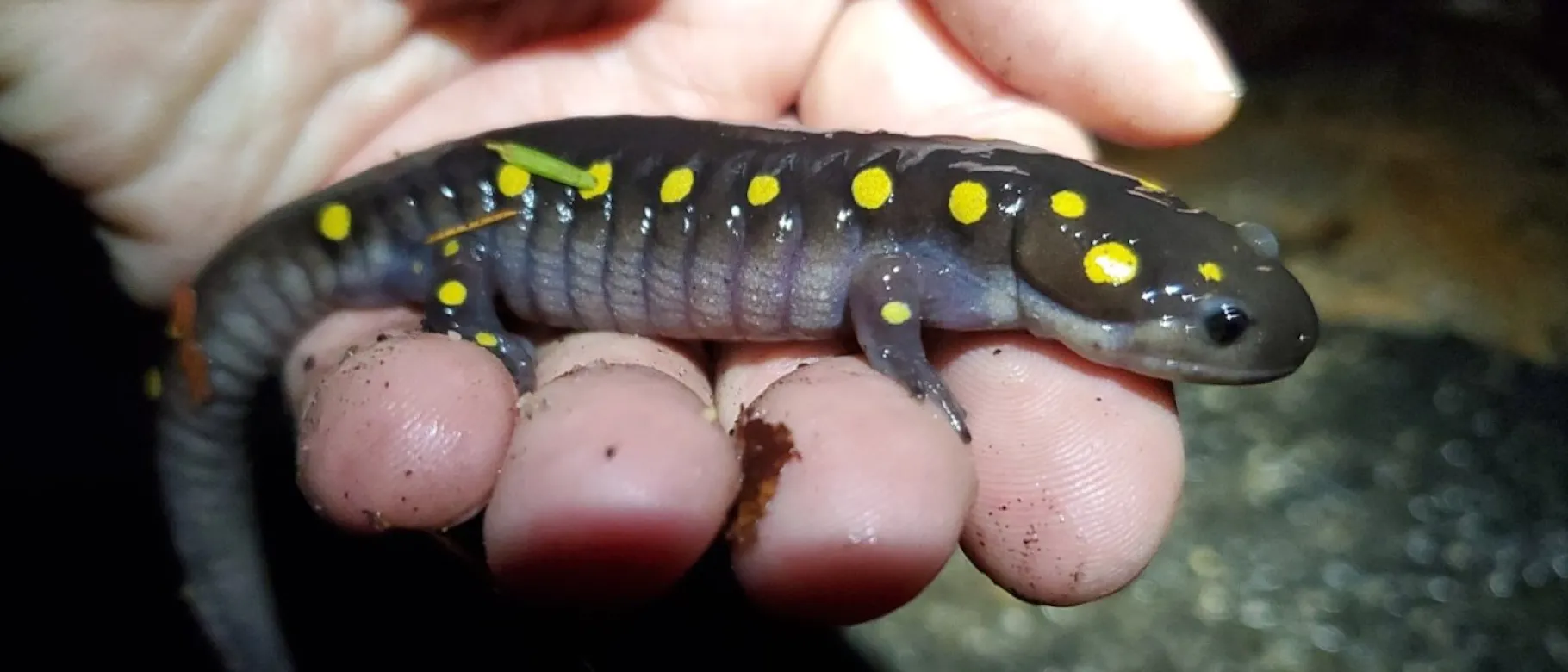
On a recent raw and rainy night, about two dozen people, including UNE faculty members and students, came together on the Biddeford Campus to gather research data for the Maine Big Night amphibian monitoring project (MBN).
“It is called big night, but it is not really just one night,” explained Jeff Parmelee, Ph.D., associate teaching professor in the School of Biological Sciences and a board member of MBN. “It is a time in the spring when salamanders and frogs are going from their winter haunts in the woods to find their breeding pools. Amphibians can be particularly sensitive indicators of environmental decline with their reliance on both the aquatic and terrestrial habitats and how easily they absorb pollutants through their skin.”
For the past four years volunteers have fanned out across Maine to record data on the amphibians, including identifying species, recording the locations of their migrations, and gathering data on their mortality levels. The volunteers also play a more direct role in their conservation by moving them safely across the road to avoid traffic.
“It is a citizen science project, which is really cool,” Parmelee stated. “We are encouraging these public non-scientists to go out there and both help the amphibians and collect important data. It is fun getting people involved and getting them interested in nature.”
One of the volunteers working on the project is sophomore Delia Cote (Environmental Science, ’24).
“Hopefully my career is going to be oriented around amphibian conservation and potentially amphibian pathology,” she said. “Conducting the research is a lot of fun and it provides great experience.”
As the amphibians move to their breeding grounds en masse, they often take dangerous routes, including crossing roadways.
Vehicle strikes can lead to high mortality rates for the amphibians. In some high traffic areas, up to 90% of the amphibians found had been hit by cars. However, in 2020 researchers involved in MBN found a 50% reduction in mortality rates because people were not traveling as much because of the pandemic.
“COVID-19 was not good for anybody, but the amphibians actually benefited from it,” Parmelee commented. “COVID started around March 2020. People were not going anywhere or traveling on the roads when the migration happened.”
On this night, a reporter from NEWS CENTER Maine’s 207 came along as the group helped amphibians cross the roadway safely and gathered data on the creatures they discovered.
“I think it is so important to get people out there to see these creatures,” Parmelee told reporter Beth McAvoy. “They are just absolutely beautiful. They are hidden from sight until these brief periods in the spring when we go out at night to encounter them.”
Cote says working on the project has given her a new appreciation for these seldom seen species.
“People do not always pay attention to them because they are small and a lot of people find them to be slimy and gross critters,” she said. “Nobody pays much attention to them and throughout the years their populations have been declining rapidly. As I have gotten older, I have come to appreciate just how unique they really are.”
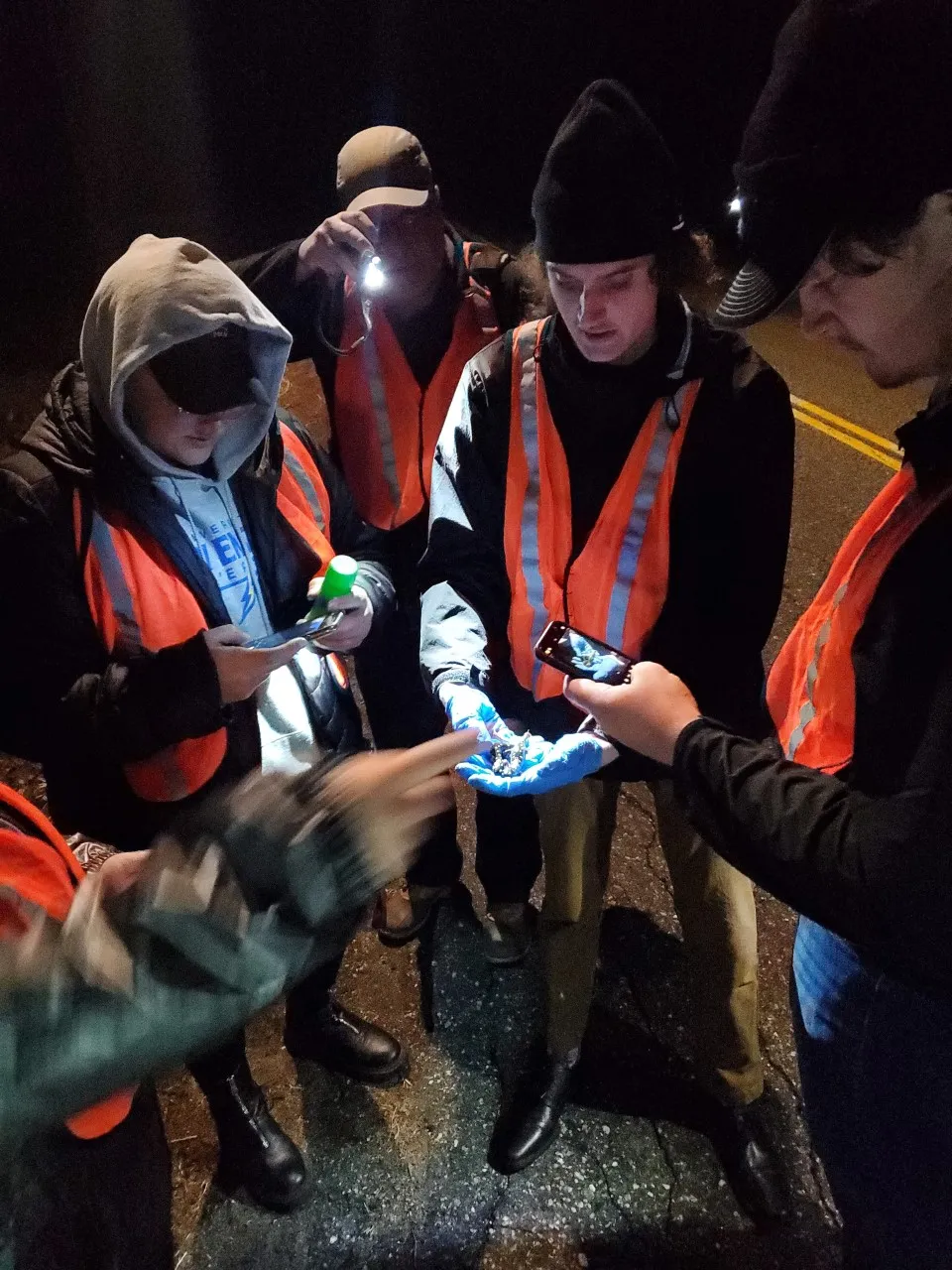
Students check out an amphibian they found
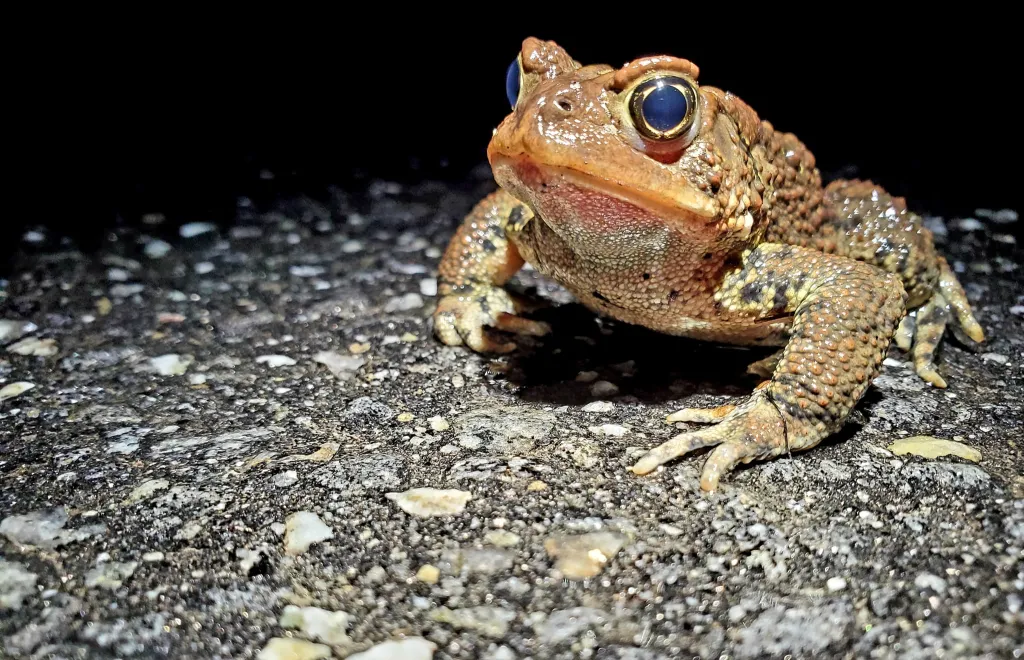
Frogs and salamanders migrate in the spring
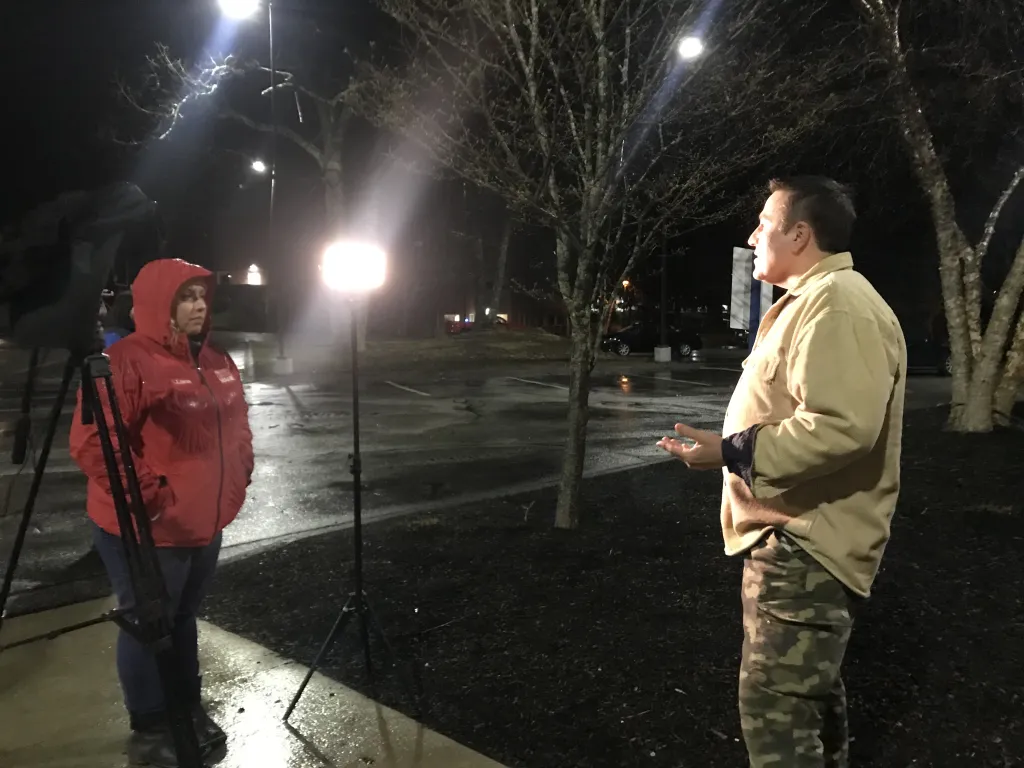
Jeff Parmelee interviewed for 207
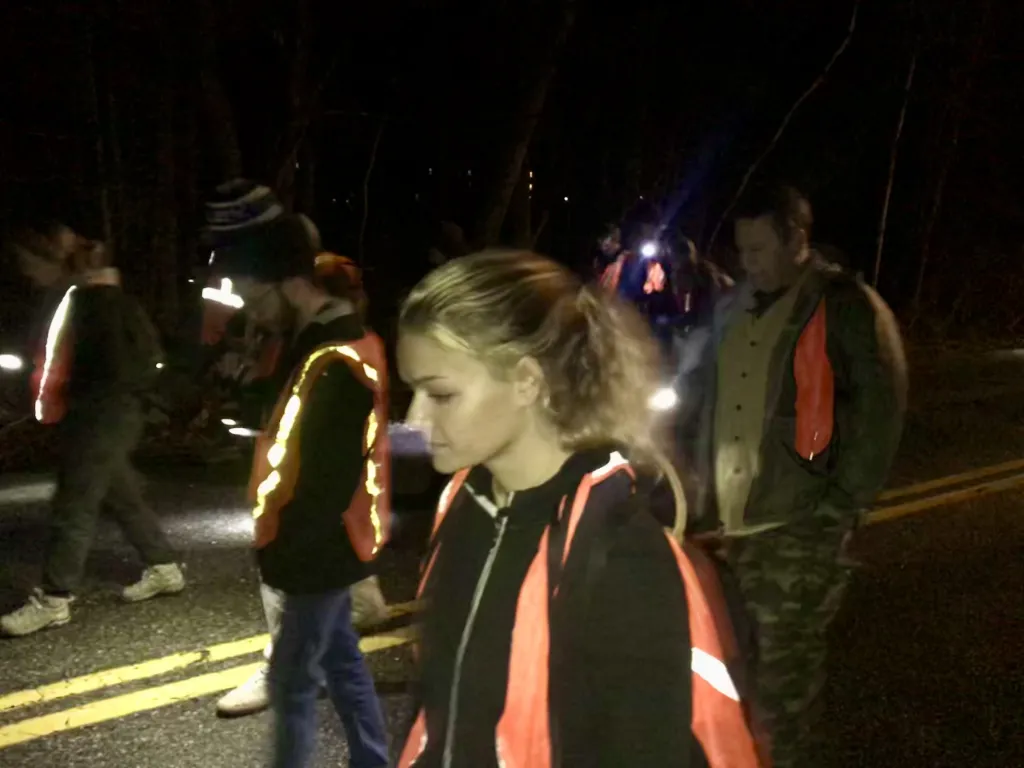
Delia Cote with the group